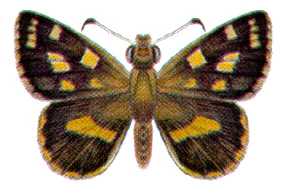
Calamansi, also known as calamondin, Philippine lime, or Philippine lemon, is an economically important citrus hybrid predominantly cultivated in the Philippines. It is native to the Philippines, Borneo, Sumatra, and Sulawesi in Indonesia in Southeast Asia, as well as southern China and Taiwan in East Asia. Calamansi is ubiquitous in traditional Filipino cuisine. It is naturally very sour, and is used in various condiments, beverages, dishes, marinades, and preserves. Calamansi is also used as an ingredient in Malaysian and Indonesian cuisines.

Ficus microcarpa, also known as Chinese banyan, Malayan banyan, Indian laurel, curtain fig, or gajumaru (ガジュマル), is a tree in the fig family Moraceae. It is native in a range from China through tropical Asia and the Caroline Islands to Australia. It is widely planted as a shade tree and frequently misidentified as F. retusa or as F. nitida.

Gahnia is a genus of sedges native to China, Southeast Asia, New Guinea, Australia, New Zealand and a number of Pacific Islands. The common name is due to the toothed margins. It often forms tussocks.

Gahnia filum, the chaffy saw-sedge, is a tussock-forming perennial in the family Cyperaceae, endemic to Australia. It grows to between 60 and 110 cm in height.

Acidonia microcarpa is a species of shrub in the plant family Proteaceae. It is the only species in the genus Acidonia. It is endemic to the south coast of the Southwest Botanic Province of Western Australia.
Gahnia trifida, the coastal saw-sedge, is a tussock-forming perennial in the family Cyperaceae, endemic to southern Australia.

Antipodia chaostola, the chaostola skipper, is a butterfly of the family Hesperiidae. It is found in Australia along the coast of Victoria, New South Wales and Tasmania.

Grevillea agrifolia, the blue grevillea, is a species of flowering plant in the family Proteaceae and is native to the north of Western Australia and parts of the Northern Territory. It is a shrub or tree with narrowly oblong leaves with the narrower end towards the base, and creamy-yellow flowers.

Hesperilla chrysotricha, the chrysotricha skipper or goldenhaired sedge-skipper, is a butterfly of the family Hesperiidae. It is found in the Australian states of Victoria, Tasmania, South Australia and Western Australia.

Hesperilla crypsargyra, the silvered skipper or silver hedge-skipper, is a butterfly of the family Hesperiidae. It is found in the Australian states of New South Wales, Queensland and Victoria.

Hesperilla donnysa, the donnysa skipper or varied sedge skipper, is a butterfly of the family Hesperiidae. It is found in the Australian Capital Territory, New South Wales, Queensland, South Australia, Tasmania, Victoria and Western Australia.

Hesperilla idothea, the flame sedge-skipper, is a butterfly of the family Hesperiidae. It is found in the Australian states of New South Wales, Queensland, South Australia and Victoria.

Hesperilla ornata, the spotted skipper or spotted sedge-skipper, is a butterfly of the family Hesperiidae. It is found along the non-tropical eastern seaboard of mainland Australia and in the adjacent mountain ranges.
Gahnia ancistrophylla, also known as hooked-leaf saw sedge, is a tussock-forming perennial in the family Cyperaceae, that is native to southern parts of Western Australia, South Australia and Victoria.

Gahnia decomposita is a tussock-forming perennial in the family Cyperaceae, that is native to southern parts of Western Australia.
Gahnia sclerioides is a tussock-forming perennial in the family Cyperaceae, that is native to south western parts of Western Australia.
Gahnia halmaturina is a tussock-forming perennial in the family Cyperaceae, that is native to parts of South Australia.
Gahnia hystrix is a tussock-forming perennial in the family Cyperaceae, that is native to parts of Kangaroo Island.

Gahnia microstachya is a tussock-forming perennial in the family Cyperaceae, that is native to south eastern parts of Australia from New South Wales to Tasmania.
Gahnia javanica is a tussock-forming perennial in the family Cyperaceae, that is native to parts of Asia and Melanesia.













